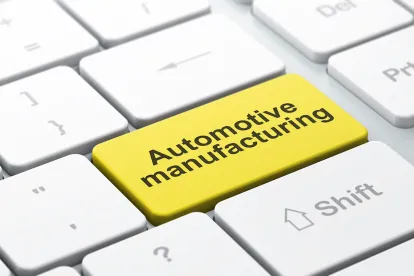Analysis by Julie Dautermann, Competitive Intelligence Analyst
Key Developments
-
Foley & Lardner shared highlights from the Outlook Panel featured at the recent OESA 2022 Automotive Supplier Conference.
-
U.S. new light-vehicle inventory reached 1.56 million units at the end of October, representing a 49 days’ supply and the highest level since May 2021, according to estimates from Cox Automotive. Separate analysis from Cox Automotive indicates used light-vehicle inventory reached 2.44 million units at the end of October, which is “close to pre-pandemic 2019 levels.”
-
The Motor & Equipment Manufacturers Associationannounced a new business structure which will operate under the MEMA umbrella and represent vehicle suppliers with two groups: MEMA Aftermarket Suppliers Group and MEMA Original Equipment Suppliers Group.
-
Mexico exported over 267,000 vehicles in October, representing a 19% increase from volumes one year ago and the highest level since December 2020, according to analysis in Bloomberg Law.
-
Foley & Lardner LLP Partner Craig Dillard is quoted in the Automotive World article, “US lithium mining: not if, but when,” discussing the likelihood of future U.S. lithium mining operations as the environmental, social, and corporate governance (ESG) issues surrounding in-demand rare metals evolve worldwide.
-
More than 530,000 new battery-electric vehicles were registered in the U.S. in the first nine months of this year, representing an increase of 57% compared to the same period last year, according to data from Experian Automotive excerpted in Utility Dive.
-
Retail sales of new-energy vehicles in China reached 4.43 million units for the first 10 months of the year, according to data from the China Passenger Car Association excerpted in Bloomberg. NEVs are projected to reach sales of 6.5 million units in China this year, and the category is comprised of pure-electric cars and plug-in hybrids. Foreign automotive joint ventures in China are expected to face challenging market conditions if they have not prioritized the production of NEVs in the nation.
-
The Wall Street Journal reports several major automakers may increase the usage of lithium-iron-phosphate (LFP) batteries as a more cost-effective alternative to the more commonly used nickel-and-cobalt variety. The article notes EVs equipped with LFP batteries may have shorter driving ranges.
-
A study by utility company National Grid predicts that highway fast-charging sites will “see drastic increases in power demand compared to usage today.”The analysis indicates certain sites will have power demands equivalent to small towns or industrial sites, and notes that larger transmission interconnections and upgrades can take as long as eight years to construct.
Market Trends and Regulatory
-
The National Automobile Dealers Association released a statement of support for a bill in the U.S. Senate, the Preventing Auto Recycling Theft (PART) Act, which intends to combat a rise in catalytic converter thefts in the nation.
OEMs/Suppliers
-
BorgWarner announced a strategic partnership with Wolfspeed that includes a multiyear agreement to purchase $650 million of silicon carbide devices annually in support of products including electric vehicles.
-
Sources in Bloomberg and The Wall Street Journal indicate Volkswagen intends to review projects and investments in areas including autonomous driving and battery-electric vehicles. The potential reviews arrive roughly two months after the automaker named a new CEO, and are attributed to factors including software delays.
-
Renault is reorganizing into multiple units and plans to pursue a separate stock market listing for its electric-vehicle division.
Connected/Autonomous Vehicles and Mobility Services
-
Stellantis will acquire Budapest-based automated driving technology startup AiMotive for an undisclosed amount.
Electric Vehicles and Low Emissions Technology
-
The U.S. Department of Energy awarded nearly $74 million for 10 projects in seven states to advance recycling and reuse of batteries for applications including electric vehicles. The funding is supported by the Bipartisan Infrastructure Law.
-
Battery recycling company Redwood Materials reached a multi-billion dollar deal to supply Panasonic with high-nickel cathode for battery production beginning in 2025.
-
Analysis in The Wall Street Journal provides an assessment of the supply chains for EV components including batteries, electric motors and electronics.
-
Our Next Energy was selected to supply Bollinger Motors with Aries battery packs on Class 4-6 chassis cabs. Bollinger anticipates production will start in late 2023.
-
GM expects its North American EV sales to be “solidly profitable” by 2025 due to factors including federal incentives and tax credits, as well as reduced battery cell costs.
-
Analysts quoted in Supply Chain Dive predict battery manufacturers may experience market headwinds in the near-term due to supply constraints of components such as lithium, copper and graphite.
-
Amazon has over 1,000 custom electric vehicles designed by Rivian making deliveries in more than 100 U.S. cities. Amazon has delivered more than 5 million packages with the vehicles since the program first rolled out in July.
-
Ann Arbor, Michigan-based Domino's Pizza Inc. announced it will roll out a fleet of approximately 800 Chevy Bolt electric vehicles around the country to deliver pizza orders.
-
Volvo and Pilot plan to build a network of charging stations for battery-electric Class 8 trucks at Pilot and Flying J locations across the U.S. Earlier this year, GM announced a partnership with EVgo and Pilot to install 2,000 fast chargers at up to 500 Pilot and Flying J locations.
-
Japanese electric motor manufacturer Nidec Corp. plans to invest approximately $715 million to build a plant in Mexico to produce electric car motors.
-
Fisker started production of its electric Ocean SUV in Austria, and the company intends to build approximately 42,400 units in 2023.






 />i
/>i

